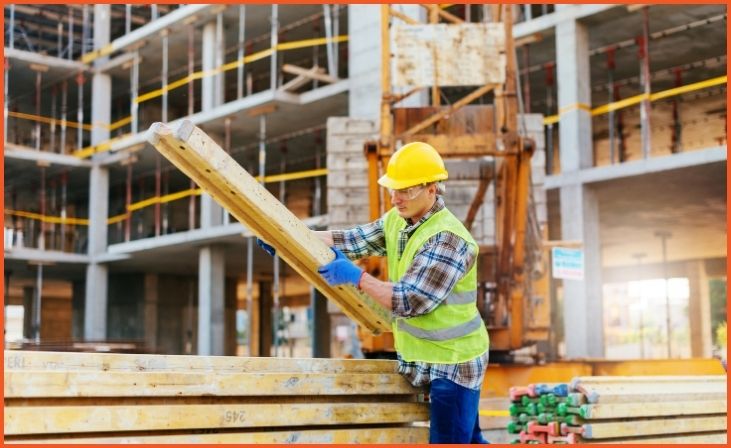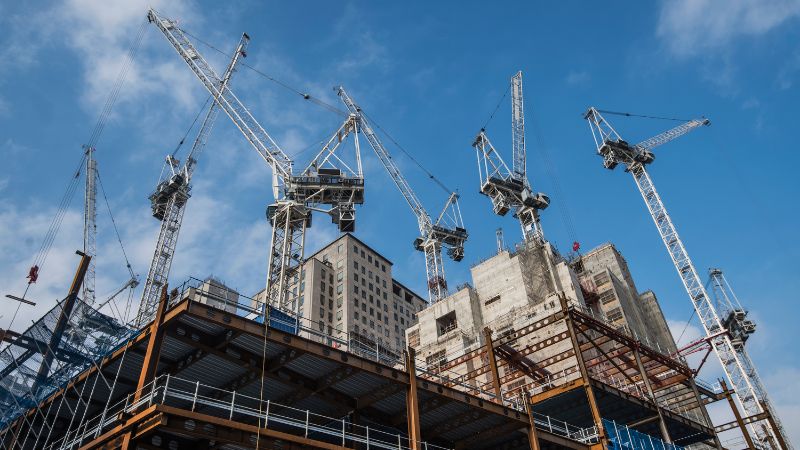Constructing tall buildings requires meticulous planning and execution. From ensuring structural integrity to addressing environmental concerns, every aspect demands attention to detail. Tall structures are symbols of innovation and development in addition to being beautiful works of architecture. To successfully construct these towering structures, it is essential to consider factors such as site selection, materials, and sustainability. Additionally, modern tall buildings must adhere to strict safety regulations and incorporate advanced engineering techniques. This article delves into the nine key considerations that are crucial for constructing tall buildings, offering insights and practical tips for architects, engineers, and builders.
9 Key Considerations When Constructing Tall Buildings
Site Selection and Analysis

The first and foremost consideration in constructing tall buildings is site selection and analysis. Choosing the right location involves evaluating the geological conditions, soil quality, and the overall stability of the ground. A comprehensive site analysis helps in identifying potential risks such as soil erosion, seismic activity, and flooding, which can significantly impact the building’s foundation. Urban planning regulations and zoning laws also play a critical role in site selection, as they determine the permissible height and density of buildings in a particular area. Additionally, the proximity to essential services, transportation links, and infrastructure must be considered to ensure the building’s functionality and accessibility.
Read Also: Tips For Choosing Your Next Construction Contractor
Structural Integrity and Engineering
Ensuring the structural integrity of tall buildings is paramount to their safety and longevity. Advanced engineering techniques and materials must be employed to create a robust framework capable of withstanding various stresses. The design must account for factors such as wind load, seismic forces, and the building’s own weight. Engineers use sophisticated software and simulations to model these forces and optimize the structure accordingly. Because of their great strength and longevity, materials like steel and reinforced concrete are frequently employed. Innovations such as tuned mass dampers and flexible joints are also incorporated to enhance the building’s resilience to dynamic loads and movements.
Safety and Compliance
Safety is a critical concern in tall building construction, encompassing fire safety, emergency evacuation, and structural stability. Compliance with local and international building codes and standards is mandatory to ensure the building’s safety. Fire-resistant materials, automatic sprinkler systems, and smoke control measures are essential components of fire safety strategies. Emergency evacuation plans must include well-designed stairwells, emergency exits, and safe refuge areas. Regular safety inspections and drills are conducted to ensure that all safety systems are functional and effective. Additionally, construction workers must adhere to stringent safety protocols to prevent accidents and injuries during the building process.
Sustainability and Environmental Impact
Incorporating sustainability into the design and construction of tall buildings is increasingly important. Sustainable building practices reduce environmental impact, improve energy efficiency, and enhance the overall quality of life for occupants. Frameworks for incorporating sustainable practices are provided by green building certifications like LEED (Leadership in Energy and Environmental Design). These include using renewable energy sources, recycling construction materials, and implementing efficient water and waste management systems. Energy-efficient HVAC systems, green roofs, and solar panels are also commonly used to reduce the building’s carbon footprint. Sustainable buildings not only benefit the environment but also offer economic advantages through reduced operating costs and increased property value.
Materials and Construction Techniques

The choice of materials and construction techniques has a significant impact on the quality and durability of tall buildings. High-strength materials such as steel and reinforced concrete are preferred for their load-bearing capacity and resistance to environmental stresses. The construction techniques employed must ensure precision and efficiency to meet the project timelines and budget. Prefabrication and modular construction methods are gaining popularity due to their ability to speed up the construction process and reduce waste. Advanced construction technologies such as Building Information Modeling (BIM) and 3D printing are also being used to enhance accuracy and collaboration among project stakeholders.
Architectural Design and Aesthetics
Architectural design and aesthetics play a crucial role in the success and appeal of tall buildings. The design must balance functionality with visual appeal, creating a structure that is both practical and iconic. Architectural elements such as façade design, building shape, and interior layout are carefully planned to optimize space utilization and enhance the user experience. Modern tall buildings often feature innovative designs that push the boundaries of conventional architecture, incorporating elements such as glass curtain walls, green spaces, and open floor plans. The aesthetic appeal of tall buildings not only contributes to the cityscape but also enhances the building’s market value and desirability.
Technological Integration
The integration of technology in tall buildings enhances their functionality, efficiency, and occupant comfort. Smart building technologies, such as automated lighting, climate control, and security systems, are increasingly being incorporated into modern tall buildings. These technologies enable real-time monitoring and control of various building systems, improving energy efficiency and reducing operational costs. High-speed internet connectivity and advanced communication systems are also essential for modern commercial and residential buildings. The use of technology extends to the construction phase as well, with drones, robotics, and advanced software tools being used to improve precision, safety, and efficiency.
Project Management and Coordination
Effective project management and coordination are critical to the successful construction of tall buildings. These projects are large and complicated, requiring careful resource allocation, scheduling, and planning. Project managers must coordinate with multiple stakeholders, including architects, engineers, contractors, and regulatory authorities, to ensure smooth execution. Advanced project management tools and software are used to track progress, manage risks, and resolve issues promptly. Clear communication and collaboration among all parties involved are essential to avoid delays and cost overruns. Regular progress reviews and quality checks help in maintaining the project’s momentum and adherence to the planned timeline and budget.
Cost Management and Budgeting

Cost management and budgeting are crucial considerations in the construction of tall buildings. The significant financial investment required for such projects necessitates careful planning and monitoring of expenses. A detailed budget covering all aspects of construction, including materials, labor, permits, and contingency funds, must be prepared at the outset. Effective cost management involves continuous tracking of expenditures, optimizing resource utilization, and implementing cost-saving measures without compromising quality. Value engineering techniques can be employed to identify cost-effective alternatives in design and materials. The project will stay under budget and avoid unforeseen financial difficulties if transparent and accurate financial reporting is maintained.
Read Also: Major Challenges Facing The Construction Industry Today
Conclusion
Building tall structures is a complex and rewarding endeavor that necessitates careful consideration of numerous factors. By focusing on key aspects such as safety, sustainability, and structural integrity, construction professionals can ensure the successful completion of tall buildings that stand the test of time. With proper planning and innovative approaches, the skyline of our cities can continue to evolve, reflecting both technological advancements and architectural excellence.
FAQs
What are the primary safety concerns when constructing tall buildings?
Ensuring the building can withstand natural disasters, such as earthquakes and high winds, is crucial. Additionally, fire safety measures and emergency evacuation plans must be meticulously designed.
Why is sustainability important in constructing tall buildings?
Sustainable practices reduce environmental impact, enhance energy efficiency, and can significantly lower long-term operational costs, making the building more eco-friendly and economically viable.



